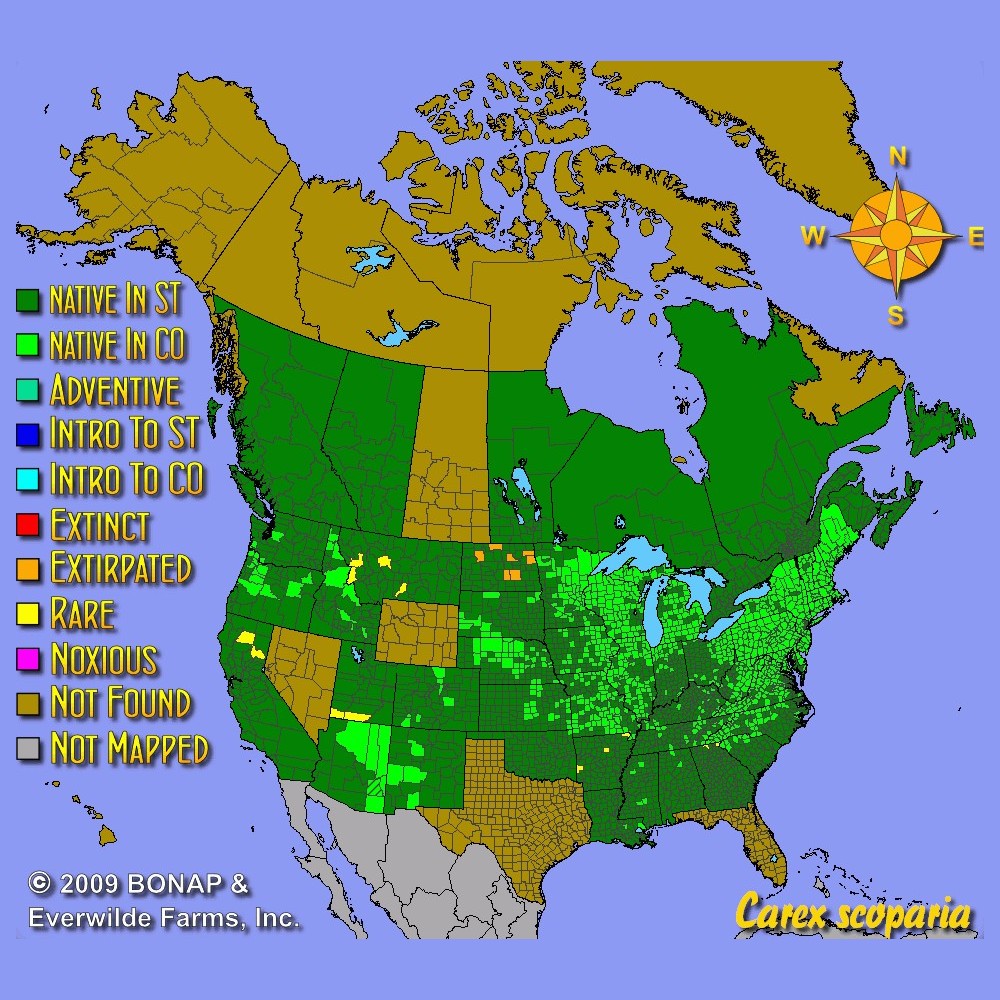Oval Sedge Seeds
- HOW TO GROW
- FAST FACTS
- REVIEWS
HOW TO GROW
Sowing: Direct sow either in late fall or early spring. Plant the Carex Scoparia seed just below the surface of the soil, compacting the soil very firmly. For spring planting, mix the Oval Sedge seeds with moist sand and store in the refrigerator for 60 days before planting. Keep the soil lightly moist until germination, since this seed cannot germinate in dry soil.
Growing: Water seedlings regularly until they become established. This plant thrives in moist soil, though it also grows in dry soil and tolerates drought. It adapts well to various soil types. It makes an excellent choice for erosion control, as well as being popular for rain gardens and wetland restoration. It resists deer, while providing cover and forage for small birds and other wildlife.
Seed Saving: At the end of the season, the seed heads will begin to turn from green to brown. Remove them as soon as they ripen to their mature brown color, and spread them out to dry. Thresh them to separate the Carex Scoparia seed from the stems. Store the Broom Sedge seeds in a cool, dry place.
FAST FACTS
Common Names: Broom Sedge, Lance-fruited Oval Sedge
Latin Name: Carex scoparia
Species Origin: US Native Grass or Sedge
Type: Native Grasses, Cool Season
Life Cycle: Perennial
USDA Zones: 2, 3, 4, 5, 6, 7, 8
US Regions: Mountain, Arid/Desert, Plains/Texas, Midwest, Northern, Northeast, Southeast
Seeds per Ounce: 75,000
Stratification: Cold/Wet for 8 Weeks
Germination Ease: Stratify 8 Weeks
Sunlight: Full Sun
Height: 24 Inches
Color: Green, Brown
Bloom Season: Blooms Early Summer
Tortoise Fav
Despite daily temps of 108+ degrees daily, these seeds have done well by Day 5. Our native Sedge did not survive 3 consecutive years of drought so I have high hopes for this variety to thrive. It will be a part of my desert tortoise's browsing area.
DESCRIPTION

HOW TO GROW
Sowing: Direct sow either in late fall or early spring. Plant the Carex Scoparia seed just below the surface of the soil, compacting the soil very firmly. For spring planting, mix the Oval Sedge seeds with moist sand and store in the refrigerator for 60 days before planting. Keep the soil lightly moist until germination, since this seed cannot germinate in dry soil.
Growing: Water seedlings regularly until they become established. This plant thrives in moist soil, though it also grows in dry soil and tolerates drought. It adapts well to various soil types. It makes an excellent choice for erosion control, as well as being popular for rain gardens and wetland restoration. It resists deer, while providing cover and forage for small birds and other wildlife.
Seed Saving: At the end of the season, the seed heads will begin to turn from green to brown. Remove them as soon as they ripen to their mature brown color, and spread them out to dry. Thresh them to separate the Carex Scoparia seed from the stems. Store the Broom Sedge seeds in a cool, dry place.
FAST FACTS
Common Names: Broom Sedge, Lance-fruited Oval Sedge
Latin Name: Carex scoparia
Species Origin: US Native Grass or Sedge
Type: Native Grasses, Cool Season
Life Cycle: Perennial
USDA Zones: 2, 3, 4, 5, 6, 7, 8
US Regions: Mountain, Arid/Desert, Plains/Texas, Midwest, Northern, Northeast, Southeast
Seeds per Ounce: 75,000
Stratification: Cold/Wet for 8 Weeks
Germination Ease: Stratify 8 Weeks
Sunlight: Full Sun
Height: 24 Inches
Color: Green, Brown
Bloom Season: Blooms Early Summer
Reviews
Review
Tortoise Fav
Despite daily temps of 108+ degrees daily, these seeds have done well by Day 5. Our native Sedge did not survive 3 consecutive years of drought so I have high hopes for this variety to thrive. It will be a part of my desert tortoise's browsing area.



